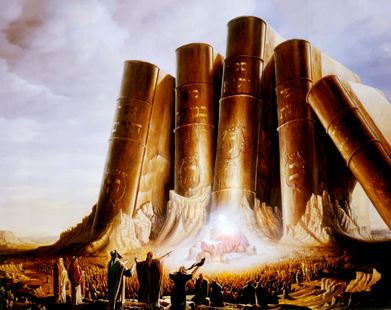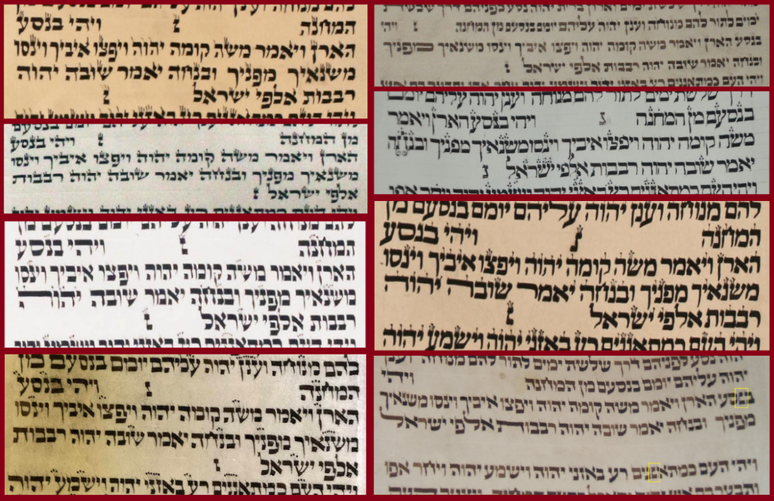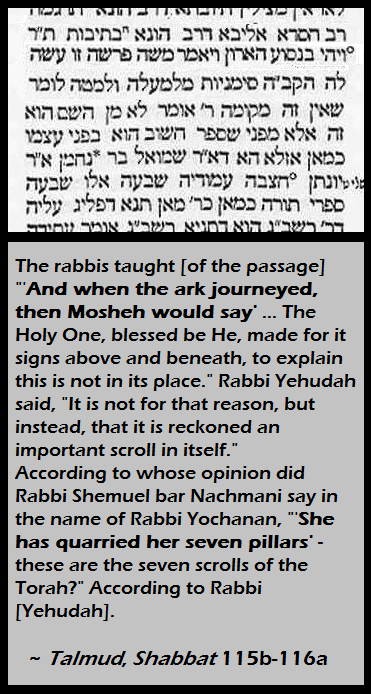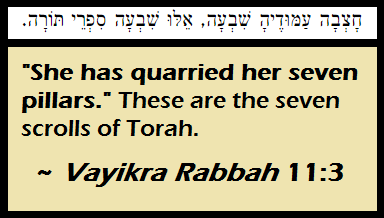THE SEVEN BOOKS OF TORAH
by Jeremy Chance Springfield
3/20/14
The title of this study might sound odd to those who are familiar with the number of books found in the Torah (the Law of the Most High). The Torah obviously consists of five books, not seven!
In light of the above fact, what kind of heresy is being proposed in this study? As you will soon see, there is no great heresy here, no real adding to the Word of the Holy One. Rather, what is happening here is a delving-into of the Word as it already exists, wherein we will be able to discern intimate truths and wonderful realities that serve to further strengthen our faith in the redemptive plan of the Holy One.
The entire basis for the idea that there are actually seven books of the Torah instead of five is found in a nuance of the Torah itself. This idea centers on only two verses of text. That passage is Numbers 10:35-36, which says:
And when the ark journeyed, then Mosheh would say, “Arise, YHWH, and let Your enemies be scattered, and let flee those hating You from before You!” And in its resting, he said, “Return, YHWH, [to] the myriad thousands of Israel!”
At a surface level, there is not much going on here to merit teaching the addition of two more books to the five already confirmed. But the above passage is just a translation, and one cannot go solely on translations when reading the Word. Recourse to the original words is needed, and to them we go.
If you have access to a Torah scroll, or to any very reliable Hebrew text, you will notice the presence of two unique letters suspended immediately before and after these verses. The following images from Torah scrolls show the letters isolated quite well.
The entire basis for the idea that there are actually seven books of the Torah instead of five is found in a nuance of the Torah itself. This idea centers on only two verses of text. That passage is Numbers 10:35-36, which says:
And when the ark journeyed, then Mosheh would say, “Arise, YHWH, and let Your enemies be scattered, and let flee those hating You from before You!” And in its resting, he said, “Return, YHWH, [to] the myriad thousands of Israel!”
At a surface level, there is not much going on here to merit teaching the addition of two more books to the five already confirmed. But the above passage is just a translation, and one cannot go solely on translations when reading the Word. Recourse to the original words is needed, and to them we go.
If you have access to a Torah scroll, or to any very reliable Hebrew text, you will notice the presence of two unique letters suspended immediately before and after these verses. The following images from Torah scrolls show the letters isolated quite well.
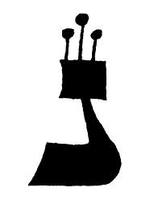
These letters are the Hebrew letter Nun (not the Catholic variety, but the Semitic, yielding the N sound, and pronounced as “noon”), and they essentially form what appears to be similar to modern brackets [ … ] around the verses. However, it needs to be noted that Hebrew does not use brackets in Holy Writ. Thus, the idea that they are intended as such is not tenable. Something else is hinted at with their placement in the flow of inspired text. In fact, the mere presence of them in the scroll of the Torah is itself seemingly miraculous, for it is not permitted to add any letter or take any letter away from the Torah. However, since such a long tradition exists with them in the holy text, they alone are the only extraneous letters one will ever see in a kosher Torah scroll. At no other time in the Torah are such letters encountered. Thus, the allowance of them must point to something truly significant. The image at the bottom right side of the above examples shows an alternative to the method, which I have highlighted in yellow squares: the letter Nun is not found isolated like normal, but incorporated into the first and last instances they appear in words of that area of the Torah, albeit reversed so to call attention to them. This alternate practice, however, is not considered something a scribe should promote.

It should also be noted that the way the letter is drawn in the above images from the Torah scrolls is not the normal way. Instead, it appears with something of a "backwards-facing" formation. This is known as a Nun Hafuchim. It is essentially inverted, so that it might catch the eye of the reader, for in Torah scrolls, the scribe is held to correctly forming each letter so that they are uniform, and no confusion can arise for the reader. Such an appearance as this stands out to a reader of the Hebrew text. Different scribes will draw this letter in varying forms, just so that it is sufficiently distinct from the surrounding text in order to cause the reader to know something different is happening in the text of Scripture at that point.
Again, I emphasize that this is the only time in the Torah where these letters appear “floating” in the text. They have been included in scrolls quite faithfully for literally thousands of years.
Why are they present?
What is their purpose?
The answer to these questions is the goal of this study.
The precise purpose for placing these two letters in scrolls of the Torah has been long debated. Jewish commentators have a position from antiquity that the brief text is actually a whole separate book of the Torah. Yes, this minuscule text is made up of only two verses, and yet is still considered an entire book by itself! Consider the following passage out of the Talmud, tractate Shabbat 115b-116a, which discusses this passage from the book of Numbers, and gives the interesting take on it:
Again, I emphasize that this is the only time in the Torah where these letters appear “floating” in the text. They have been included in scrolls quite faithfully for literally thousands of years.
Why are they present?
What is their purpose?
The answer to these questions is the goal of this study.
The precise purpose for placing these two letters in scrolls of the Torah has been long debated. Jewish commentators have a position from antiquity that the brief text is actually a whole separate book of the Torah. Yes, this minuscule text is made up of only two verses, and yet is still considered an entire book by itself! Consider the following passage out of the Talmud, tractate Shabbat 115b-116a, which discusses this passage from the book of Numbers, and gives the interesting take on it:
If understood in this unique fashion, the Torah then increases from its normal count of five books to a total of seven, for it would effectively cut the book of Numbers into three separate books, yielding the final result of the Torah being counted like this:
- Sefer B’reyshith (Scroll of Genesis)
- Sefer Sh’moth (Scroll of Exodus)
- Sefer Vayikra (Scroll of Leviticus)
- Sefer B’midbar (Scroll of Numbers 1 - 10:34)
- Sefer Bin’soa (Scroll of Numbers 10:35-36)
- Sefer HaAm (Scroll of Numbers 11:1 – 36:13)
- Sefer D’varim (Scroll of Deuteronomy)
This idea of Numbers 10:35-36 being an entirely separate book is one that was held as valid by many ancient sources. A few are shared here. According to the Midrash Chaseiroth V'Yoteiroth, when speaking about this passage, it declares: “It is a hidden book.” In the Mishnah, in Yadayim 3:5, the ruling is made that any text of Scripture that is eighty-five letters in length or greater must be attempted to be rescued from destruction by fire if such should befall it, based on the fact that the text from Numbers 10:35-36 is viewed as a brief, but complete book, and it consists of only eighty-five letters in the Hebrew. The Medieval Jewish commentator, Tobiah ben Eliezer, in his book Lekach Tov (known also as the Pesikta Zutarta), states also that these two verses comprise an entirely separate book of the Torah.
In light of these ancient perceptions, it can thus be said that seven books are found contained in five. The idea that it would become seven is significant for us, since literally hundreds of spiritual insights are contained in Scripture through things that are listed in sets of seven. Seven times the Holy One confirmed that His creation process was “good.” The finished creation was crowned with the Sabbath on day seven. Noah was commanded to take seven pairs of clean animals into the ark. Abraham, Isaac, and Jacob, the patriarchs of our faith, altogether built seven altars in the Promised Land. Seven appointed times were ordained for the followers of the Most High by His own decree. There are seven steps for a Levitical priest to take in order to begin his ministry. Elijah performed seven miracles. In the book of Revelation, there are mentioned seven lampstands, stars, Spirits of the Most High, seals, trumpets, vials, and voices. These are only a very small example of an incredibly complex series of sevens that run throughout all of the Word. What this does is show how the Spirit uses the grouping of seven to point to spiritual concepts and insights we should seek out and appreciate.
In all of this, notice that the quote from the Talmud cited above made mention of Proverbs 9:1 as alluding to the reality of the seven books of the Torah. This idea is repeated also in the ancient Jewish text known as Vayyiqra Rabbah, where, in 11:3, Rabbi Ben Kappara states:
In light of these ancient perceptions, it can thus be said that seven books are found contained in five. The idea that it would become seven is significant for us, since literally hundreds of spiritual insights are contained in Scripture through things that are listed in sets of seven. Seven times the Holy One confirmed that His creation process was “good.” The finished creation was crowned with the Sabbath on day seven. Noah was commanded to take seven pairs of clean animals into the ark. Abraham, Isaac, and Jacob, the patriarchs of our faith, altogether built seven altars in the Promised Land. Seven appointed times were ordained for the followers of the Most High by His own decree. There are seven steps for a Levitical priest to take in order to begin his ministry. Elijah performed seven miracles. In the book of Revelation, there are mentioned seven lampstands, stars, Spirits of the Most High, seals, trumpets, vials, and voices. These are only a very small example of an incredibly complex series of sevens that run throughout all of the Word. What this does is show how the Spirit uses the grouping of seven to point to spiritual concepts and insights we should seek out and appreciate.
In all of this, notice that the quote from the Talmud cited above made mention of Proverbs 9:1 as alluding to the reality of the seven books of the Torah. This idea is repeated also in the ancient Jewish text known as Vayyiqra Rabbah, where, in 11:3, Rabbi Ben Kappara states:
The quote above references Proverbs 9:1, which reads in full:

Wisdom has built her house; she has quarried her seven pillars.
Scripture blatantly equates the Torah with wisdom in such places as Deuteronomy 4:6, Psalm 111:10, and Proverbs 31:26. These passages were particularly in mind for the commentators of old to suggest that Proverbs 9:1 was speaking spiritually about the Torah being “Wisdom,” as well. The Father’s Word is thus equatable to wisdom. It is hewn out of seven eternal columns: the seven spiritual books of the Torah. In the physical, we see only five books, but with spiritual eyes, seven books are perceived. But why is it important to note this? The content of the Torah has not changed with this perception. Nothing has been added to the Law that was not there before this understanding. What is to be gained from looking at the Torah in this manner? Much in every way.

Beneath the surface text of the Word runs the living water of the Spirit, vivifying every sentence, every word, every syllable, every consonant and vowel sound. The well of eternity springs up through the text, and when we tap into that fountain of faithful perception, we find that there exists far more wonders than we could ever imagine. Meaning goes on forever, and we reel in the overflow of His greatness. The entire letter of the Law is upheld by the spiritual absolutes that underlie it.
Take, for example, the verses that immediately follow in Proverbs chapter 9, concerning wisdom. It has wisdom doing five things that relate specifically to the five physical books of the Torah. Wisdom, which has seven columns, is shown doing five very interesting actions in verses 2-6, which read thus:
Take, for example, the verses that immediately follow in Proverbs chapter 9, concerning wisdom. It has wisdom doing five things that relate specifically to the five physical books of the Torah. Wisdom, which has seven columns, is shown doing five very interesting actions in verses 2-6, which read thus:
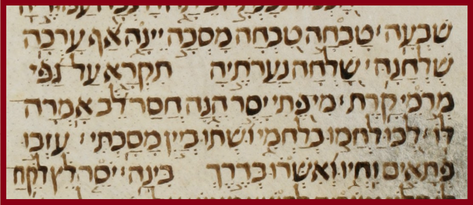
2 She has slaughtered her slaughtering; she has mixed her wine; she has also ordered her table.
3 She has sent forth her maidens; she cries out upon the heights of the elevations of the city,
4 “Who is open-minded, do turn in here!” Of him lacking heart, she says,
5 “Do come, consume my bread, and drink at the wine I have mixed.
6 Leave the open-minded ones, and live; and be led in the way of understanding.”
3 She has sent forth her maidens; she cries out upon the heights of the elevations of the city,
4 “Who is open-minded, do turn in here!” Of him lacking heart, she says,
5 “Do come, consume my bread, and drink at the wine I have mixed.
6 Leave the open-minded ones, and live; and be led in the way of understanding.”
Looking at these things shows us some intriguing parallels and helps to bring further clarity to the spiritual purpose of the Torah in our lives.
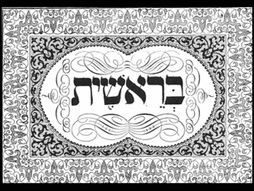
1. “She has slaughtered her slaughtering.” This parallels the book of Genesis, whereupon the Lamb was slaughtered from the foundation of the world. The means for providing for forgiveness to men has been available from the beginning. Genesis contains the astonishing story of the near-sacrifice of Isaac by his father, Abraham. For all intents, Abraham had sacrificed Isaac in his heart. It was as good as done when he was stopped from actually doing it. This speaks profoundly to the Messiah Lamb slain from the foundation of the world.
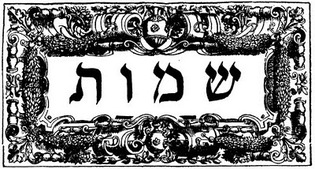
2. “She has mixed her wine.” This points to the book of Exodus, which has the Passover event centered around the blood of the lamb, for which wine is used as a symbol in the Word. The blood of the lamb of Passover was applied to the homes of faithful Israelites and the assorted peoples who obeyed the command to do so. Thus, the blood was for a mixed multitude in the book of Exodus. She has mixed her wine means that the redemption of the Lamb is for all peoples who obey the call to follow Him.
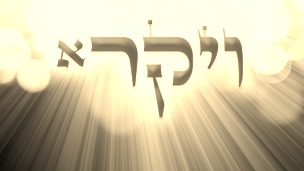
3. “She has also ordered her table.” The declaration points to the underlying theme of the book of Leviticus by the fact that it is at the table where intimate fellowship is had between individuals. It is the meeting-place where men are accepted before each other. In Semitic cultures, you do not invite an enemy to dine with you. You would not sit at a table with an idol worshiper. Leviticus is all about coming together; the Holy One has prepared a table for us, so to speak, in the Tabernacle, and we are bid to come before Him and find that He is for us, not against us.
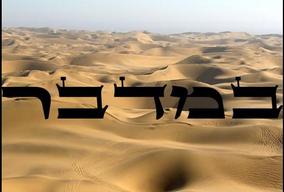
4. “She has sent forth her maidens.” This speaks powerfully to the book of Numbers, which largely recounts the sending forth of the nation of Israel into the wilderness for forty years, and its journeys there. The word used here for “maidens” is NAARAH, and has the implications of virginity, of purity. The idea is that of a woman in Scripture who is fit to be married. The book of Numbers sees the congregation of Israel, in their going-forth into the wilderness, being pruned and refined, so that what is left to enter the Promised Land is a spotless bride for the Holy One to embrace.
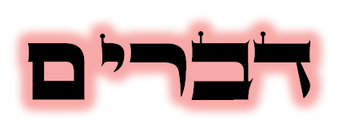
5. “She cries out upon the heights of the elevations of the city.” This points to the book of Deuteronomy, that book whose content is almost exclusively a long speech spoken by Moses before the people enter the land to inherit what was promised to Abraham. At the brink of all their hope, the Torah was recalled to their attention, that they might remember to leave behind all the ways of the world and worship alone the One who made the world. Moses cried out the Torah once more, then ascended the heights of Pisgah, the “Division,” where he was divided from the land of the living. His final words echo similarly those of wisdom in Proverbs 9:4-6.
Notice that when wisdom does finally speak, after five actions are listed, she says two separate invitations:
1st invitation: “Who is open-minded, do turn in here!”
2nd invitation: “Do come, consume my bread, and drink at the wine I have mixed. Leave the open-minded ones, and live; and be led in the way of understanding.”
The end result is that there are five actions and two invitations. The total is thus seven. It takes a careful eye to note that although she says more than just two thoughts, she only gives an invitation in two different instances. Herein is the seven within the five! With spiritual eyes we can see the physical history of the people of Israel is also an invitation to come to the One who redeemed them from sin.
Notice that when wisdom does finally speak, after five actions are listed, she says two separate invitations:
1st invitation: “Who is open-minded, do turn in here!”
2nd invitation: “Do come, consume my bread, and drink at the wine I have mixed. Leave the open-minded ones, and live; and be led in the way of understanding.”
The end result is that there are five actions and two invitations. The total is thus seven. It takes a careful eye to note that although she says more than just two thoughts, she only gives an invitation in two different instances. Herein is the seven within the five! With spiritual eyes we can see the physical history of the people of Israel is also an invitation to come to the One who redeemed them from sin.
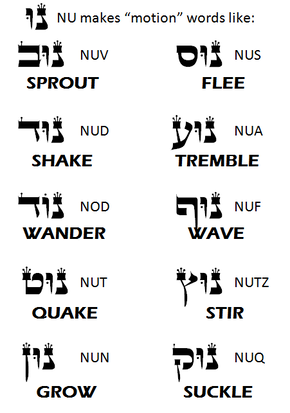
The Hebrew text of Numbers 10:35-36 holds this important detail of the seven books of Torah for us. Surrounding the text is the two unique letter Nuns, and they shout out to us not to overlook this passage. Once we understand that we need to pay attention, even further insights can be gleaned from their placement in the Torah. The letter Nun in Hebrew specifically means “To grow,” or “to move, continue.” It is significant in that it stems from the root idea of NU, which is merely the germ of several words in Hebrew that all have the idea of a movement of some type:
When understood in this manner, the placement of the two Nuns at the beginning and end of the content of Numbers 10:35-36 becomes obvious: the context is about the movement of the ark of the covenant. It speaks about the journeying and the return of the sacred object to the camp of Israel. That the text would be adorned before and after with a Hebrew letter that, at its innermost, conveys the idea of movement makes complete sense.
However, there is much more to all this. The text deals with the movement of the ark of the covenant, in which was the container of manna from heaven and Aharon’s budded rod that resurrected to life. Notice also that wisdom gives two invitations. The first is to enter in; the second has to do with eating bread. These details bring us to a more personal, second fulfillment of this passage from Numbers 10:35-36, which is recorded surprisingly in the book of John 6:5-13. This is the astonishing story of Messiah feeding the 5,000. The account is likely well-known by the reader, and for the sake of brevity, I will single out just a couple verses worthy of note. The first is verse 9, which says:
However, there is much more to all this. The text deals with the movement of the ark of the covenant, in which was the container of manna from heaven and Aharon’s budded rod that resurrected to life. Notice also that wisdom gives two invitations. The first is to enter in; the second has to do with eating bread. These details bring us to a more personal, second fulfillment of this passage from Numbers 10:35-36, which is recorded surprisingly in the book of John 6:5-13. This is the astonishing story of Messiah feeding the 5,000. The account is likely well-known by the reader, and for the sake of brevity, I will single out just a couple verses worthy of note. The first is verse 9, which says:
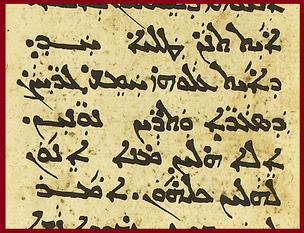
Here is one young boy who has five cakes of barley and two fishes. But these – what are these for all those?
The reader should notice immediately the five/two ratio of the bread and fish here. The five cakes of barley bread obviously parallel the five books of the Torah. But why are two fishes included here to make the seven? What do two fishes have to do with this? How do they relate to the unique letter Nuns that help us see the seven books of the Torah? How does this all connect?
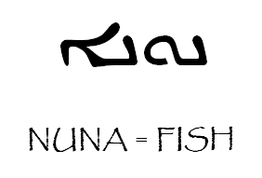
This is where the fulfillment of ancient Scripture really shines so powerfully in the life of Messiah; in Hebrew, the letter Nun means “growth / movement,” as was explained above. However, Messiah’s main language was Aramaic, which Acts 1:19 references is also the language of the land of Israel in those times, and in Aramaic, the word NUNA means “fish.” It is the very word used above in verse 9 to translate “fishes,” as well! NUNA in Aramaic is the cognate of NUN in Hebrew, for the whole experience of a fish is motion / movement, as the NU germ word expresses. The connections make complete sense.
Do you see the wisdom of the Holy One at work? Placed on either side of the passage about the movement of the Ark of the covenant among the tribes are unique occurrences of the letter Nun, and these serve to point us beyond the physical five books of the Torah to the spiritual seven books of the Torah. Then, when the embodiment of the ark of the covenant, the true manna from heaven, and the true Priest who would experience resurrection is moving in the midst of the tribes – Yeshua – He shows Himself in a powerful miracle involving five cakes of barley and two fishes, whose name is the Aramaic cognate of the Hebrew letter Nun!
Furthermore, the result of His feeding the people from the five and the two is not to be missed! Notice the detail preserved for us in John 6:13, where it speaks about the amount of leftovers from that miraculous feast:
Do you see the wisdom of the Holy One at work? Placed on either side of the passage about the movement of the Ark of the covenant among the tribes are unique occurrences of the letter Nun, and these serve to point us beyond the physical five books of the Torah to the spiritual seven books of the Torah. Then, when the embodiment of the ark of the covenant, the true manna from heaven, and the true Priest who would experience resurrection is moving in the midst of the tribes – Yeshua – He shows Himself in a powerful miracle involving five cakes of barley and two fishes, whose name is the Aramaic cognate of the Hebrew letter Nun!
Furthermore, the result of His feeding the people from the five and the two is not to be missed! Notice the detail preserved for us in John 6:13, where it speaks about the amount of leftovers from that miraculous feast:
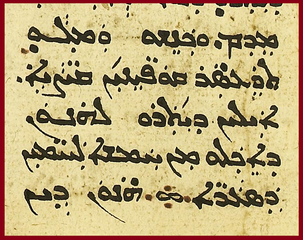
And they gathered and they filled twelve large baskets of those morsels which abounded of them that had eaten from the five barley breads.
Do not think for a moment the number of leftovers is insignificant. Twelve baskets remained of pieces of bread! Remember that the words of Moses at the journeying of the ark of the covenant in Numbers 10:36 were that it “return” to the myriads of Israel. The myriads of Israel are the twelve tribes! The twelve leftover basket-fulls of bread parallel the twelve tribes seamlessly.
Neither should be missed is the fact that no fish remained from the feast. The five cakes of barley bread multiplied, and remained for further consumption. But no fish remained. The five cakes of barley parallel the five physical books of the Torah, which remain, even after we “taste and see” that He is good. One cannot literally perform all of the Torah, since not all of the Torah applies to an individual. One can only perform the commandments that apply to them, and leave the others to those to whom they apply. However, the two fish parallel the spiritual side of the Torah, which we are supposed to take in and by which we grow inwardly, and in this sense, it applies to us as a whole. The spiritual side of the Torah applies to us completely. The spiritual aspect of the Torah is to be infused into us wholly, to take it and allow it to become a part of who we are. All of this is gleaned from John 6:13, which is rather notable, in that there are traditionally 613 commandments counted to be in the Torah.
The Holy One desires us to use His Words correctly, to apply them physically as is necessary, and spiritually, as is vital to our relationship with Him. The five books of the Torah and the seven books of the Torah are merely facets of the same gem that is His Word. The jewel of the Most High has been placed into the hands of His people, and we have been given the opportunity to appreciate the beauty it holds, and know that it is a gift that shows us how much He cares for us. This care is alluded to in the words of Numbers 10:36, where the Hebrew literally says, “Return, YHWH, [to] the myriad thousands of Israel!” The [to] is properly in brackets, for it is not in the text, and as such, the declaration of Moses, if understood without the [to] in the context, becomes a plea for redemption. When one looks intently at the Torah, we can see that the need for the Holy One to return to us is the most pressing and urgent in all of history. May that need be realized in the life of every one who reads the books of His Torah.
Neither should be missed is the fact that no fish remained from the feast. The five cakes of barley bread multiplied, and remained for further consumption. But no fish remained. The five cakes of barley parallel the five physical books of the Torah, which remain, even after we “taste and see” that He is good. One cannot literally perform all of the Torah, since not all of the Torah applies to an individual. One can only perform the commandments that apply to them, and leave the others to those to whom they apply. However, the two fish parallel the spiritual side of the Torah, which we are supposed to take in and by which we grow inwardly, and in this sense, it applies to us as a whole. The spiritual side of the Torah applies to us completely. The spiritual aspect of the Torah is to be infused into us wholly, to take it and allow it to become a part of who we are. All of this is gleaned from John 6:13, which is rather notable, in that there are traditionally 613 commandments counted to be in the Torah.
The Holy One desires us to use His Words correctly, to apply them physically as is necessary, and spiritually, as is vital to our relationship with Him. The five books of the Torah and the seven books of the Torah are merely facets of the same gem that is His Word. The jewel of the Most High has been placed into the hands of His people, and we have been given the opportunity to appreciate the beauty it holds, and know that it is a gift that shows us how much He cares for us. This care is alluded to in the words of Numbers 10:36, where the Hebrew literally says, “Return, YHWH, [to] the myriad thousands of Israel!” The [to] is properly in brackets, for it is not in the text, and as such, the declaration of Moses, if understood without the [to] in the context, becomes a plea for redemption. When one looks intently at the Torah, we can see that the need for the Holy One to return to us is the most pressing and urgent in all of history. May that need be realized in the life of every one who reads the books of His Torah.
All study contents Copyright Jeremy Chance Springfield, except for graphics and images, which are Copyright their respective creators.
